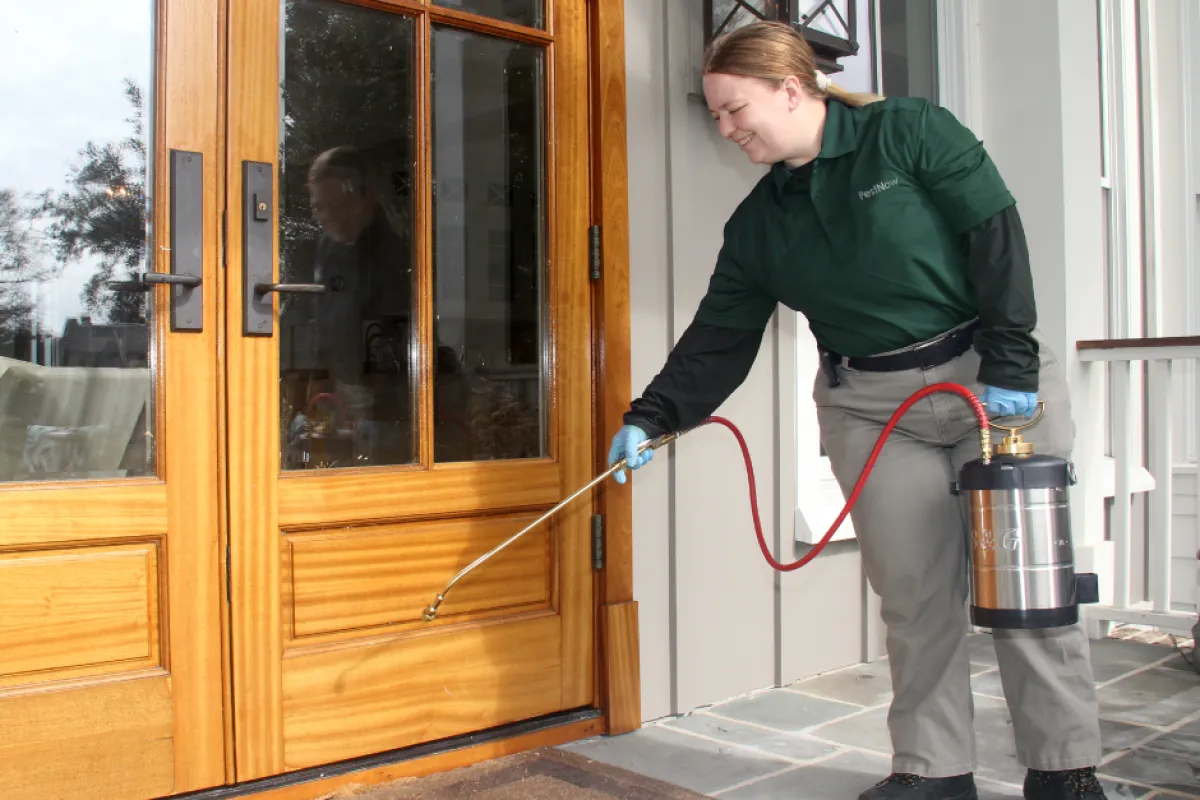Professional A1 Charlotte Bed Bug Exterminator - Top Quality Service Guaranteed
Professional A1 Charlotte Bed Bug Exterminator - Top Quality Service Guaranteed
Blog Article
Bed Insect Treatment Malfunction: Contrasting Chemical Vs. Non-Chemical Solutions
In the realm of parasite control, specifically when managing the consistent concern of bed pests, the selection in between chemical and non-chemical treatment services can be a crucial one. Both methods provide distinctive advantages and drawbacks, affecting aspects such as effectiveness, security factors to consider, and general cost. By checking out the nuanced details of each technique, a more clear understanding of which path to pursue in resolving a bed pest problem can be acquired.
Performance of Chemical Therapies
Chemical therapies for bed pest problems have actually been commonly acknowledged for their fast and potent efficacy in removing these insects. When thinking about the efficiency of chemical treatments, it is critical to understand that they can give a thorough and fast remedy to a bed pest trouble. Professional pest control men typically depend on pesticides to target bed bugs at various stages of their life cycle, including eggs, grownups, and nymphs. These chemicals generally work by interfering with the bed pests' worried system, bring about paralysis and eventual fatality.
Additionally, chemical therapies have the benefit of offering residual effects, meaning that they can continue to get rid of bed bugs also after the initial application. This residual activity is especially helpful in combating any kind of possible re-infestations. Additionally, the quick activity of chemical therapies can bring relief to individuals encountering extreme bed pest problems, permitting them to restore control of their home rapidly.
Safety And Security Worry About Chemical Solutions
One essential aspect that requires mindful factor to consider when utilizing chemical solutions for bed pest therapy is guaranteeing the safety of residents and the setting. Direct exposure to specific chemicals utilized in bed insect treatments can lead to respiratory issues, skin inflammation, or other negative reactions, especially in individuals with pre-existing conditions or sensitivities.
Furthermore, the ecological impact of chemical services is one more substantial factor to consider. Some pesticides used in bed bug therapies might be unsafe to helpful pests, wildlife, and ecological communities if they leach into the dirt or water supply. It is vital to make use of chemical therapies carefully, following safety guidelines, and thinking about less hazardous alternatives to alleviate these risks and guarantee the secure and efficient monitoring of bed pest problems.
Benefits of Non-Chemical Strategies
Taking into consideration the potential safety and security concerns and ecological impact linked with chemical options for bed insect treatment, exploring non-chemical methods presents an appealing alternative with numerous unique benefits. Non-chemical therapies are ecologically pleasant, as they do not add to air or water pollution, making them a sustainable selection for bug control.
Furthermore, non-chemical remedies can be effective in targeting bed insects, consisting of hard-to-reach areas where chemical therapies might not permeate. Methods such as warm treatment, vacuuming, heavy steam cleaning, and mattress coverings give extensive obliteration without using hazardous chemicals. Moreover, non-chemical methods can be much less disruptive, needing marginal prep work and permitting quicker reentry into treated areas. In general, choosing for non-chemical bed pest treatment approaches not just prioritizes safety and security and environmental protection but also makes certain detailed and reliable parasite control.
Limitations of Non-Chemical Treatments

Furthermore, non-chemical treatments usually need numerous applications to attain effective removal. This can i loved this be time-consuming and may not always assure complete removal of all bed insects and their eggs, specifically in concealed or hard-to-reach areas.
Moreover, the success of non-chemical treatments heavily relies upon appropriate implementation and thoroughness, which can be challenging for individuals without specialist experience. Inadequate application of non-chemical approaches may cause incomplete obliteration, causing consistent invasions and the demand for extra therapies.
Consequently, while non-chemical therapies have their advantages, it is vital to recognize these restrictions and consider them when identifying the most effective technique for managing bed bug invasions.
Cost Comparison: Chemical Vs. Non-Chemical Options
Provided the constraints associated with non-chemical treatments, an important facet to evaluate in the context of bed insect monitoring is the expense contrast between chemical and non-chemical choices. Chemical treatments usually involve the application of insecticides by experts, which can vary from $250 to $900 per area, depending on the seriousness of the infestation and the size of the location to be dealt with. In contrast, non-chemical therapies like heat therapy or vapor can be extra expensive, with costs varying from $1,000 to $6,000 for an entire home. While the preliminary expense of chemical therapies may seem reduced, multiple treatments may be needed to fully eliminate the infestation, potentially increasing the general cost. On the various other hand, non-chemical choices may offer an extra environmentally friendly and view it sustainable solution, although they can be cost-prohibitive for some individuals. Inevitably, when considering the cost of bed insect treatment options, it is necessary to evaluate the in advance expenses against the performance and long-term sustainability of the picked method.
Verdict

Taking into consideration the potential safety and security worries and ecological influence associated with chemical remedies for bed insect treatment, checking out non-chemical strategies provides an encouraging option with several unique benefits.Offered the constraints linked with non-chemical treatments, a crucial facet to evaluate in the context of bed insect administration is the price contrast in between chemical and non-chemical alternatives. In comparison, non-chemical therapies like warmth therapy or vapor can be much more expensive, with prices varying from $1,000 to $6,000 for a whole home. While the preliminary expense of chemical treatments might seem reduced, a fantastic read multiple treatments may be required to fully eliminate the invasion, possibly increasing the overall expense.In final thought, when contrasting chemical and non-chemical bed insect therapy alternatives, it is vital to think about effectiveness, safety and security, benefits, limitations, and price.
Report this page